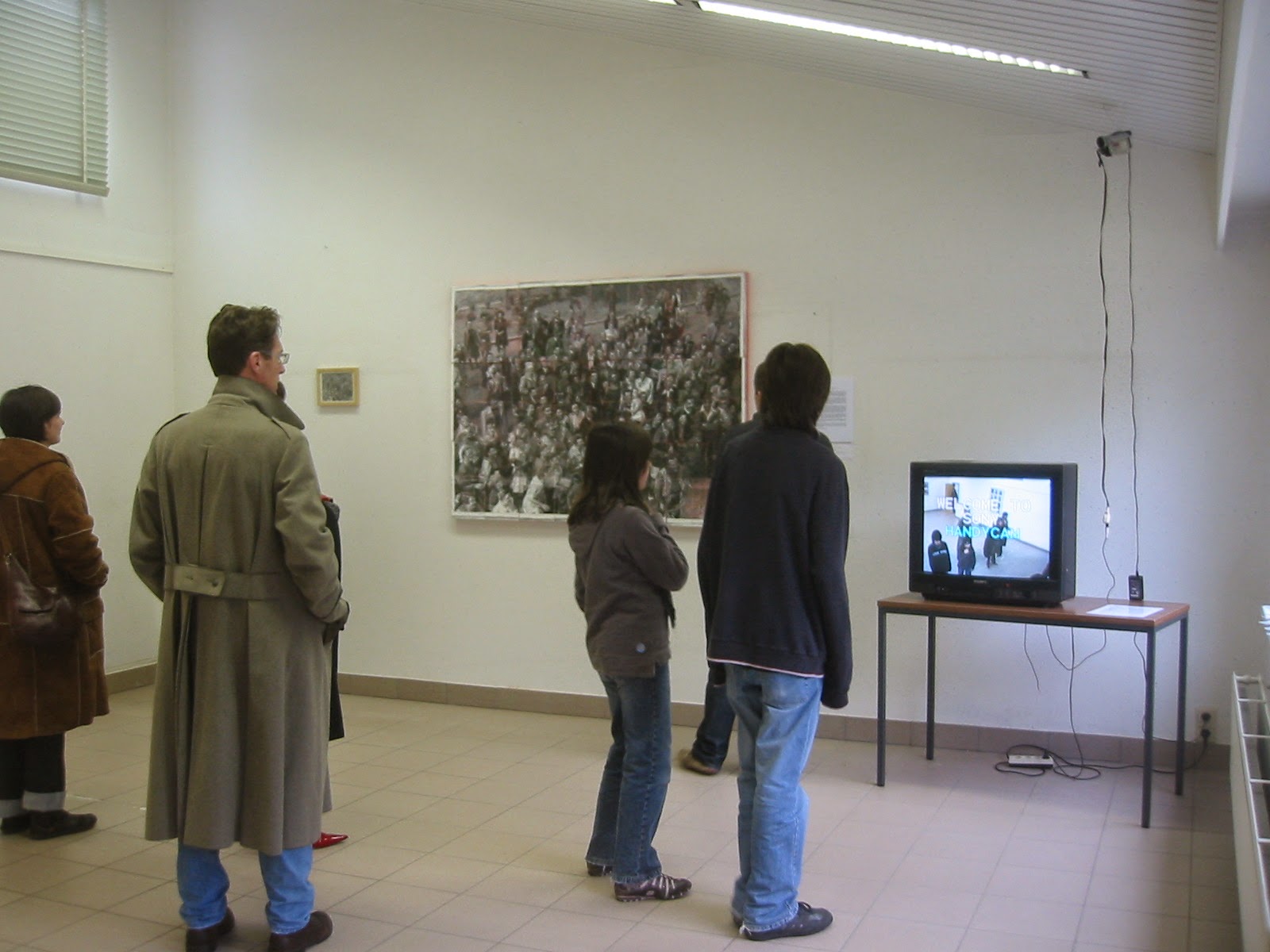On Sunday I was finalising this work below before framing it this week ready for the the expo on the 10th and 11th of May- The Fugitive Image, Deconstructing the Frame.......I still have Thursday to paint as there are some areas that still need careful attention.
penultimate above and final work below - spot the difference......
We are back just over a week now from Lake Garda and the Dolomites and I am still thinking about the wonderful muted colours and tones of the buildings, many painted with soft pastel colours of extraordinary subtleness, and inside the churches how ornament and sculpture play with light, articulating spaces framed by moulded edges, engaged columns, cornices, pediments, friezes, etc...
Have started to read Goethe's 'Italian Journey' and am enjoying his precise observations of nature. I found this quote in the introduction of the W H Auden / Elizabeth Mayer translation and it struck me.
"We ought to talk less and draw more. I, personally, should like to renounce speech altogether and, like organic nature, communicate everything I have to say in sketches."
I saw some of the sketches he made in the small Goethe Museum in the castle in Malcesine which traced his journey and the development of his book. There were few people sketching but plenty sending text messages and endlessly snapping pictures with smart phones. Goethe and other 18th and 19th century grand tourists during the Romantic movement and European Enlightenment laid the foundations from which later modern tourism in Italy would grow. Since the war it has become a largely pre-packaged mass-marketed consumer product. Despite the cliches Italy still has much to offer an observant traveller, although I wonder what Goethe would make of it now?
The train to school also affords a good opportunity to read Robin Kirkpatrick's translation of Dante's Divine Comedy. In one train ride from Brussels to Waterloo I can get through two or three canto's and descend further down the circles of suffering souls and deeper into Hell, one journey slotting neatly into another. I arrived today at the circle of the avaricious and the spendthirfts.
Some of his descriptions of landscape are clearly inspired by the Alto Adige region of Italy and the Dolomites north of Verona, Brescia and Lake Garda several of which places he mentions by name in Canto 20 of the Inferno. Long before the Romantics made the landscapes of northern Italy picturesque Dante was describing them to give a recognisable form to his Inferno, Purgatory and Paradise.
Below Heaven and Hell where we walked in the Brenta Dolomites and above Lake Garda...............
Brenta Dolmites above Lago di Molveno
Varone Waterfall, Lake Garda
...and this surely is one of 'the Islands of the Blessed'. We arrived by boat from Gardone, had a guided tour and bought three bottles of family produced olive oil.....










